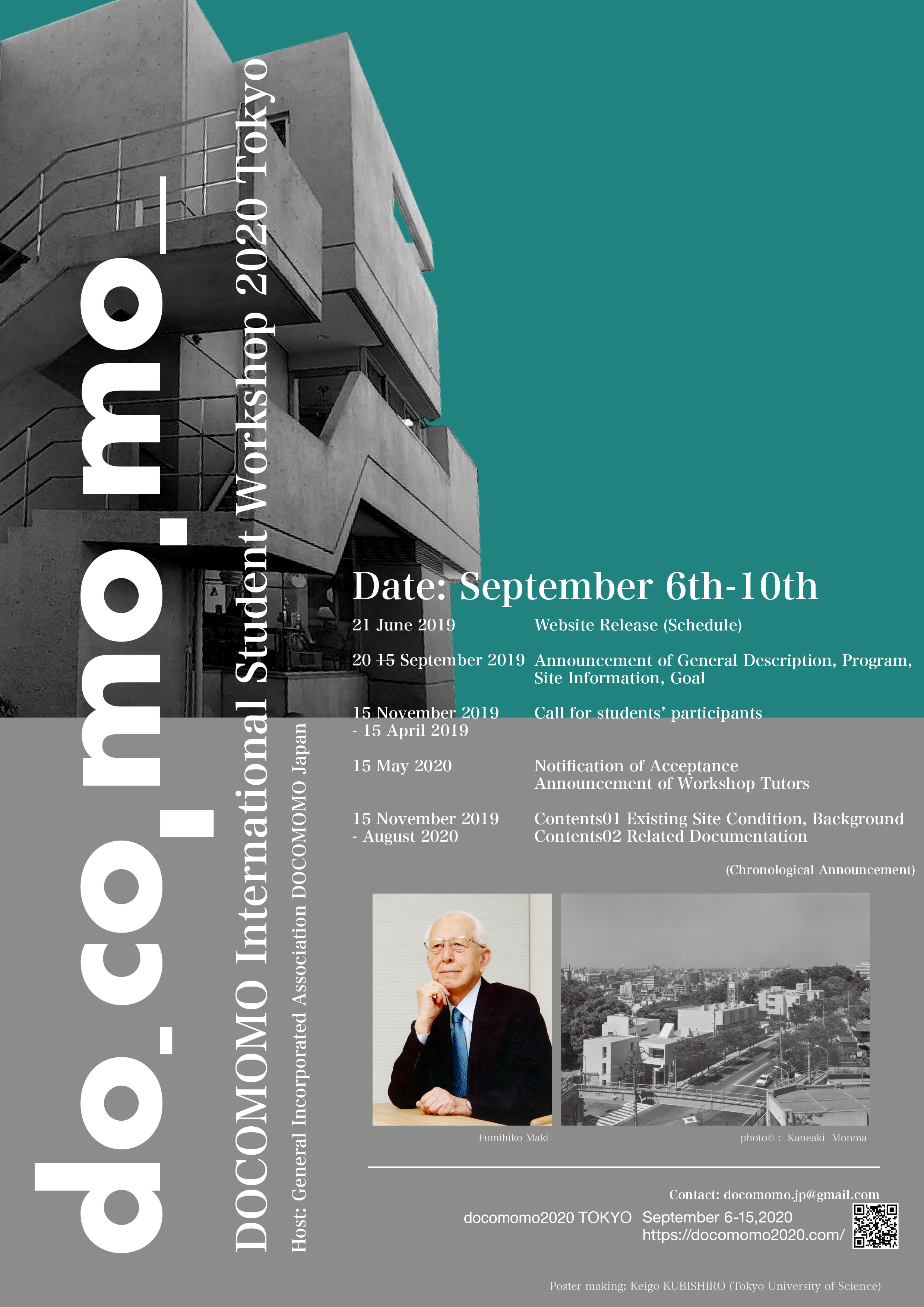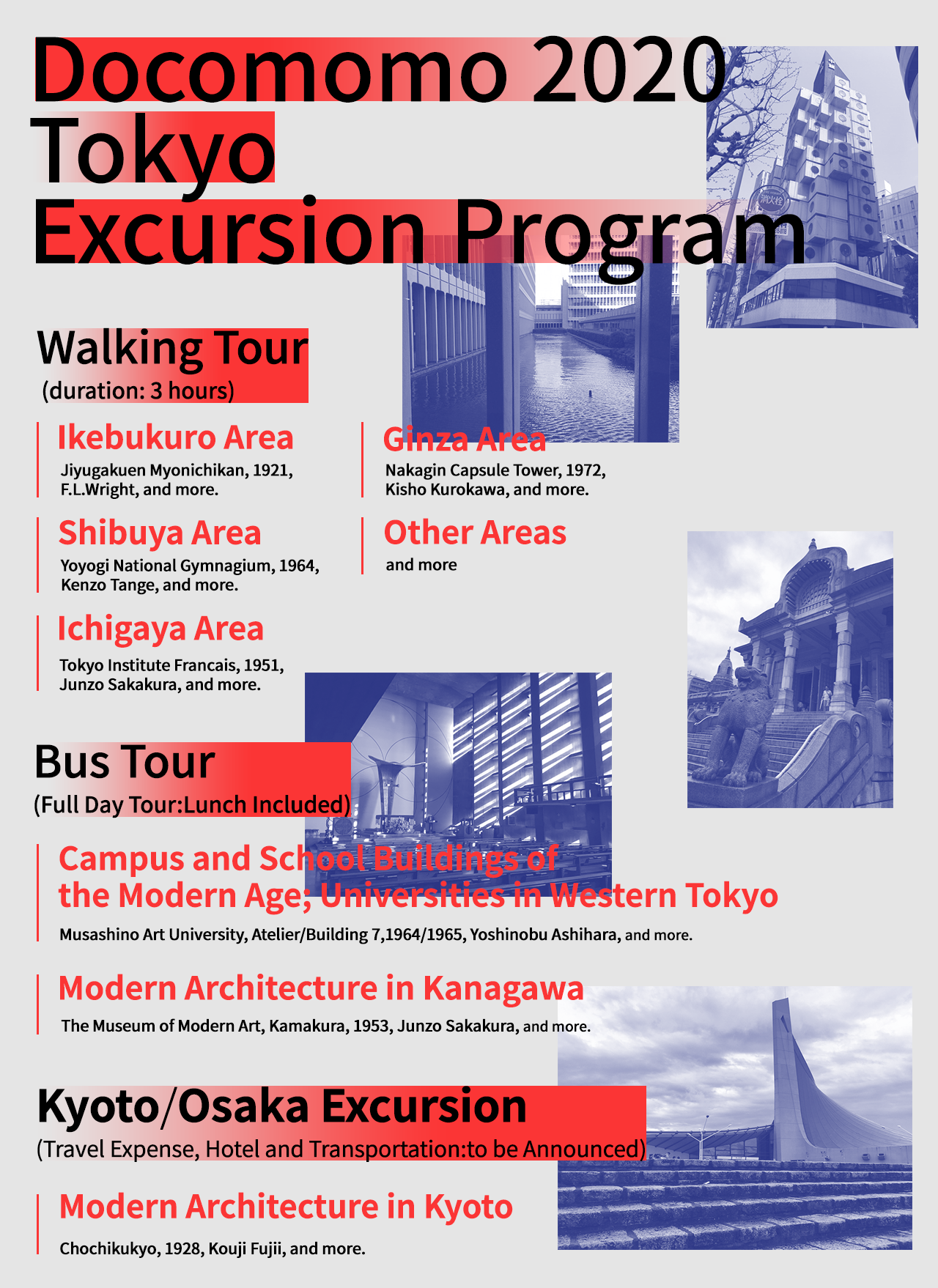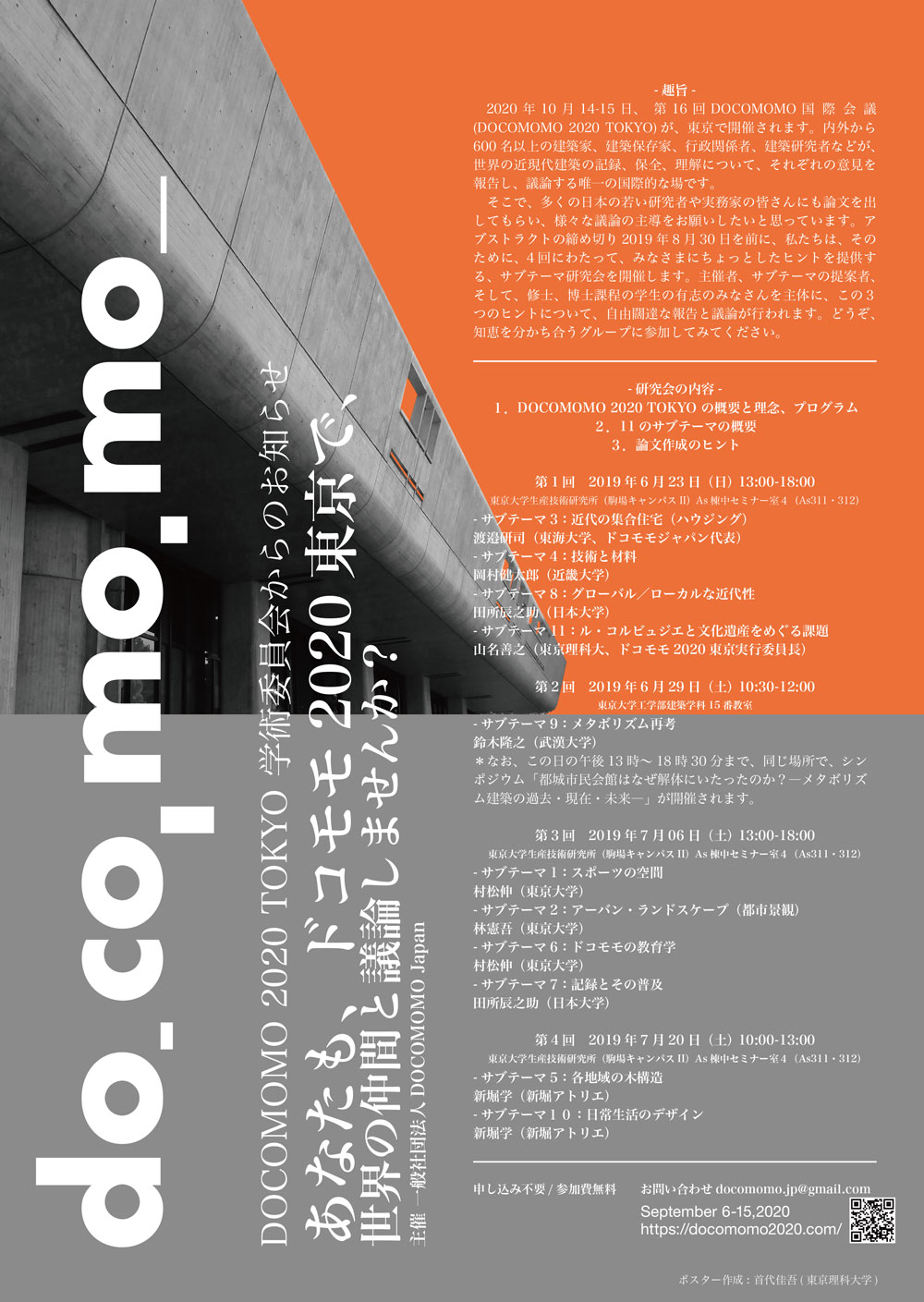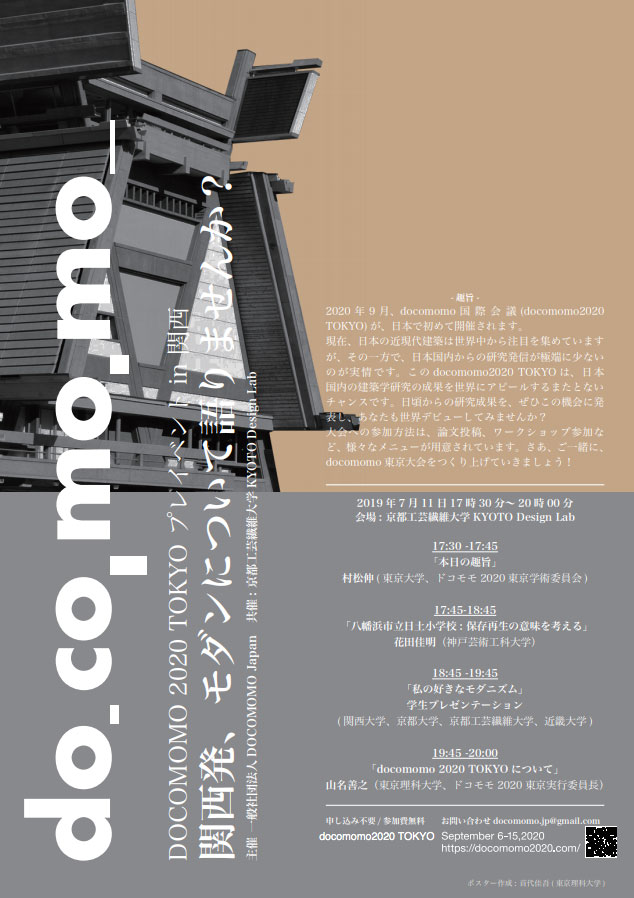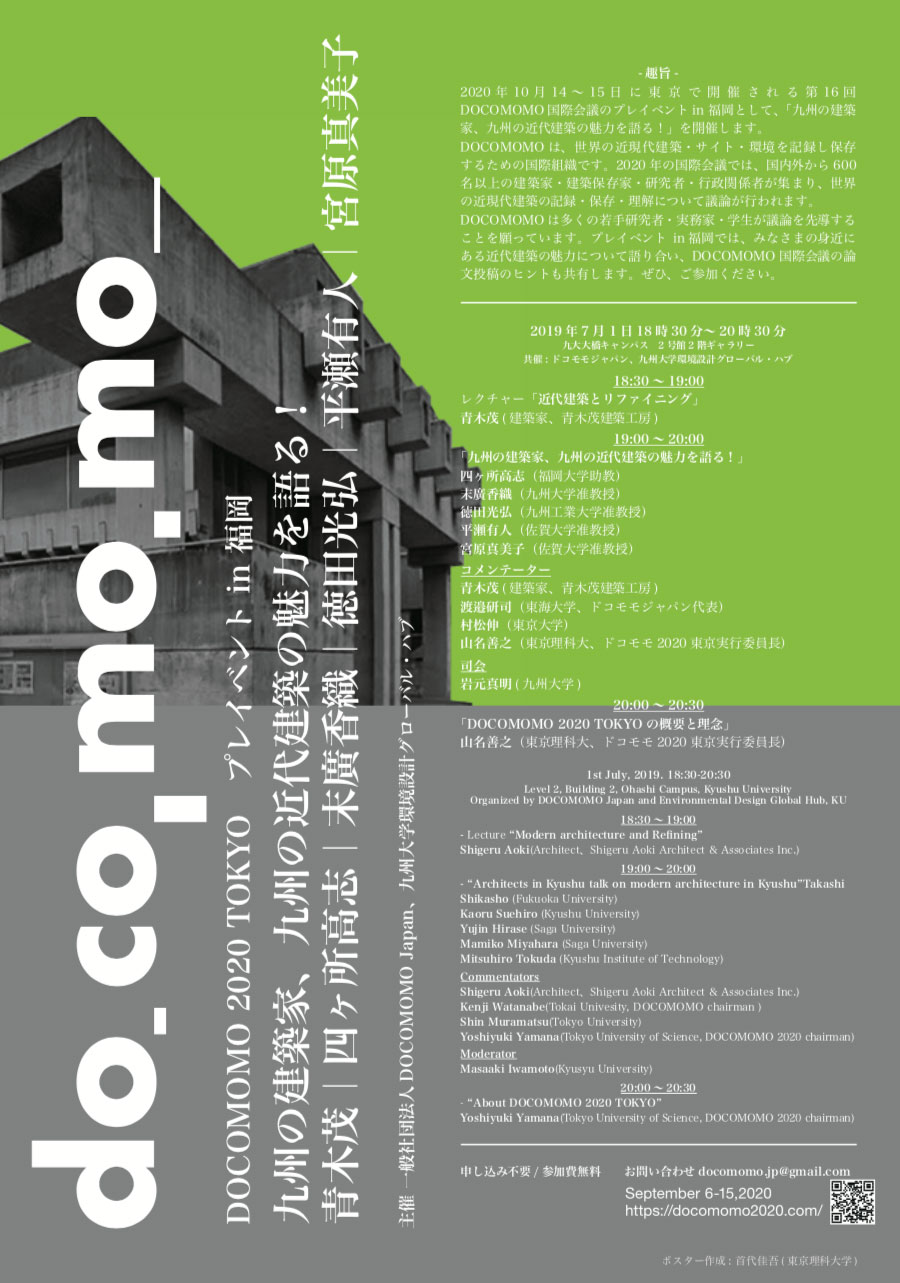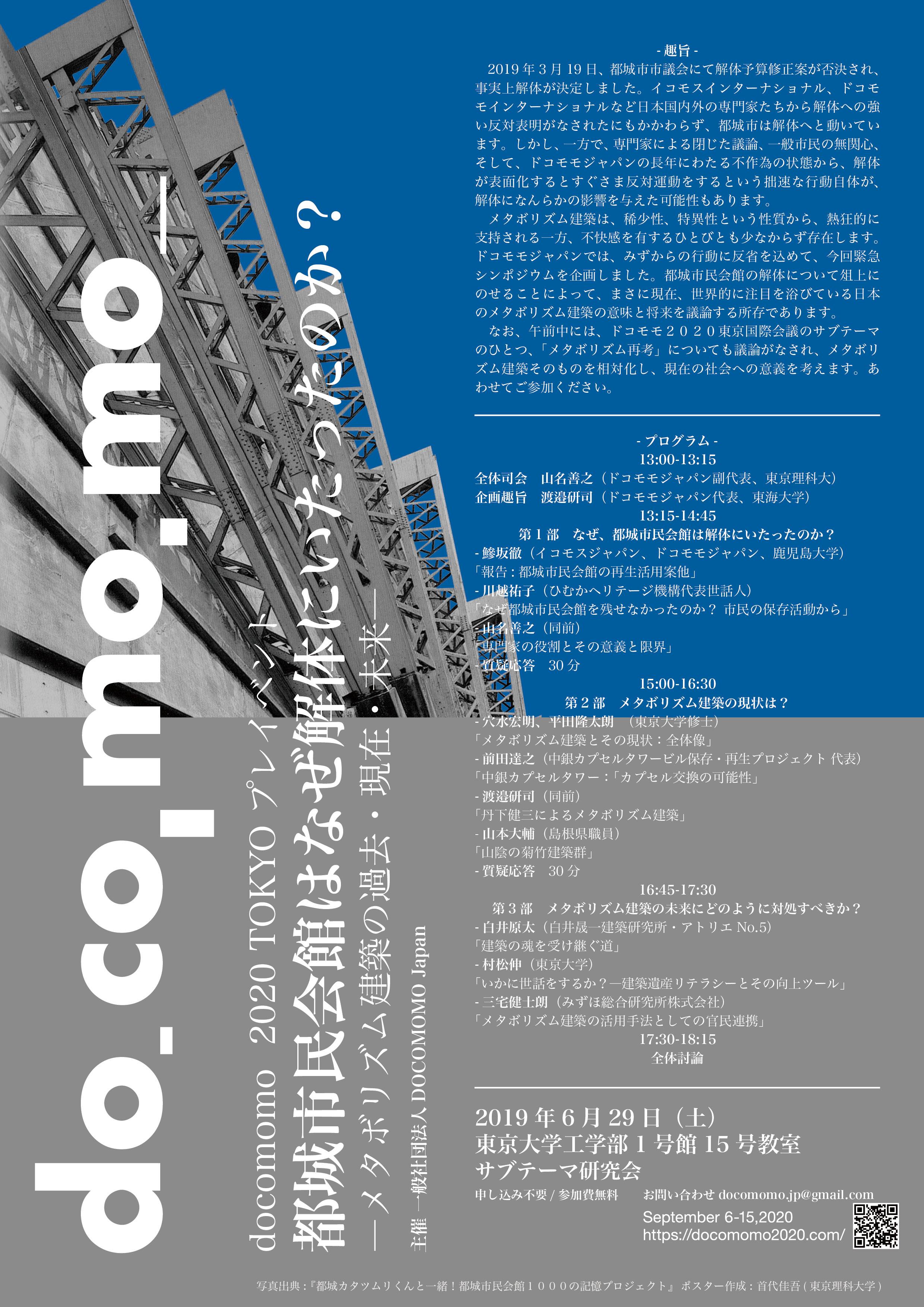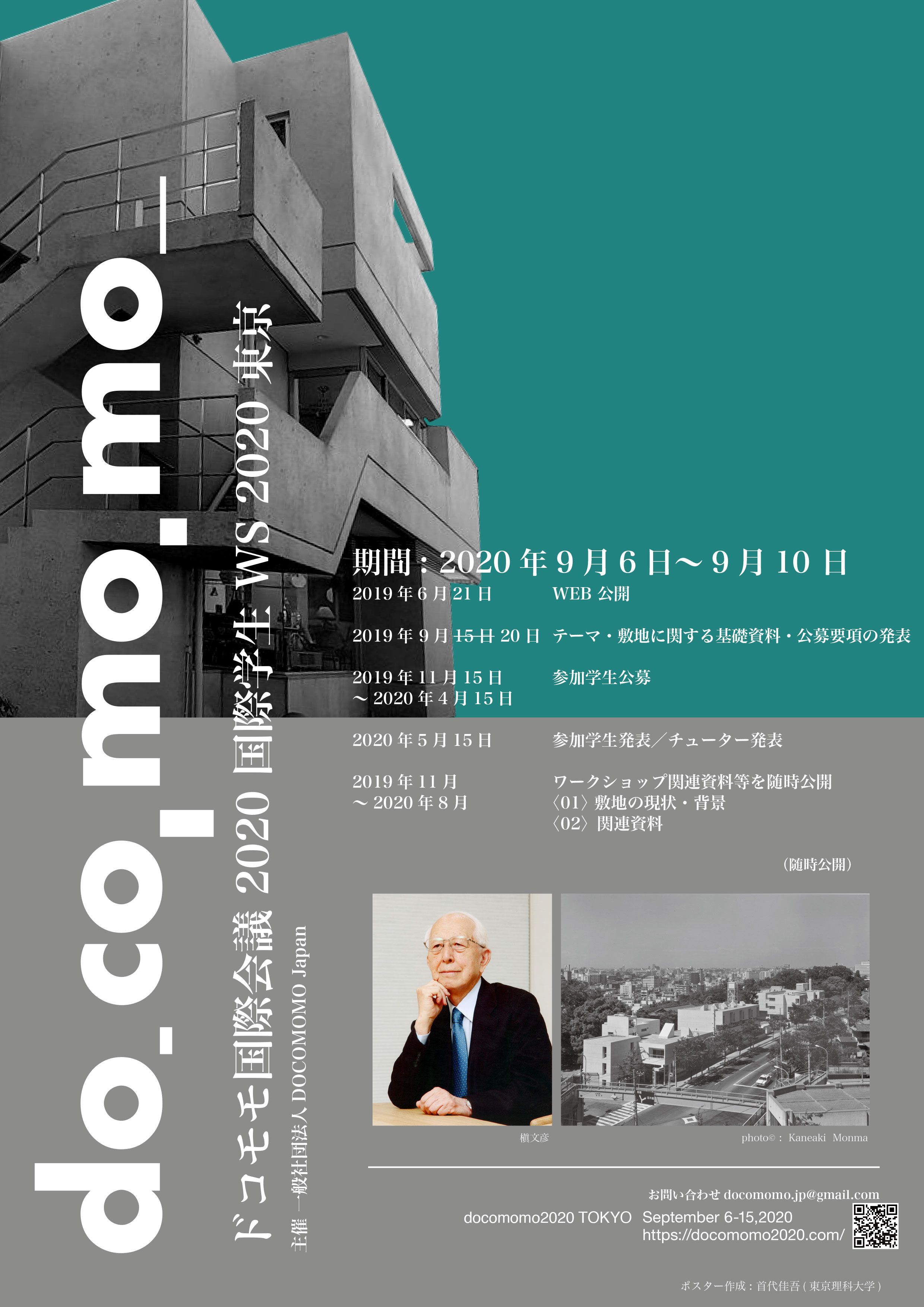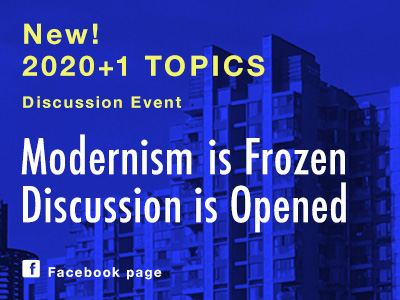
The 16th International Docomomo Conference Tokyo Japan 2020+1
Inheritable Resilience: Sharing Values of Global Modernities
This page was last modified: November 5, 2021.
The 16th International Docomomo Conference has ended.
Thank you for your participation. You can continue to
view the archive of the online conference at Oxford
Abstract until December 31, 2021. Oxford Abstracts
NEW: Docomomo conference 2020+1 proceedings
NEW: 開会式・国立西洋美術館シンポジウム・
基調講演アーカイブ
8/29 Opening Ceremony, National Museum of Western Art Symposium and Keynote speech,
9/2 Yoyogi Gymnasium Symposium and Closing Ceremony

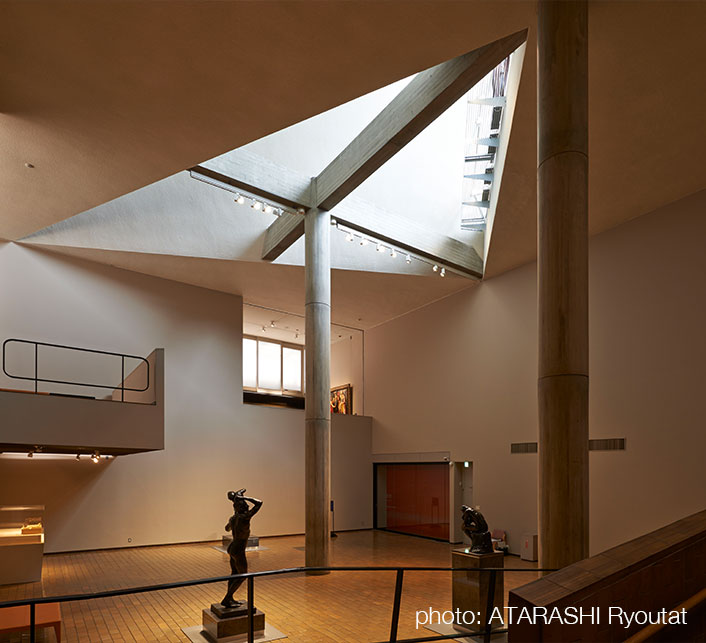
WELCOME TO THE FIRST DOCOMOMO VIRTUAL CONFERENCE!
Docomomo Japan together with Docomomo International are excited that we are able to invite you all to the 16th, but the very first, Docomomo International VIRTUAL Conference from August 29, to September 2, 2021.
Since 1990, every 2 years, docomomo has been constantly holding the international conferences. Last year in 2020, for the first time in our docomomo history, we had to postpone the conference scheduled in Tokyo and hoped to see the worldwide pandemic is to be contained. With the time we actually gained, we were able to enhance and expand the contents of the conference theme and we can now have a much more exciting conference this year in 2021. Session themes are increased from 12 to 16. One change we had to make, however, is to hold this conference completely virtually.
After a year of numerous remote working and online meetings, we all become somewhat familiar with digital system that we knew nothing about before. Even so, it is quite challenging for our organizing committee to shift the conference completely virtually. Thanks to many encouragements and tireless supports given from docomomo international staff, the scientific committee and many fellow members from worldwide, we came to the conclusion that an old dog can learn a new trick! Now we are very pleased to tell you that almost all the contents we planned for the real conference can be shifted to virtual.
We will have 2 keynote speeches at the opening and one at the closing. And all sessions with presentations and discussions will be held in the 3 days in between. We are still in process of organizing detailed schedule, but we realized we need to announce the following online guidelines now for all the participants.
Here are the more details of the virtual conference:
Virtual Conference Guideline (General Information) About your video presentation About the proceedings

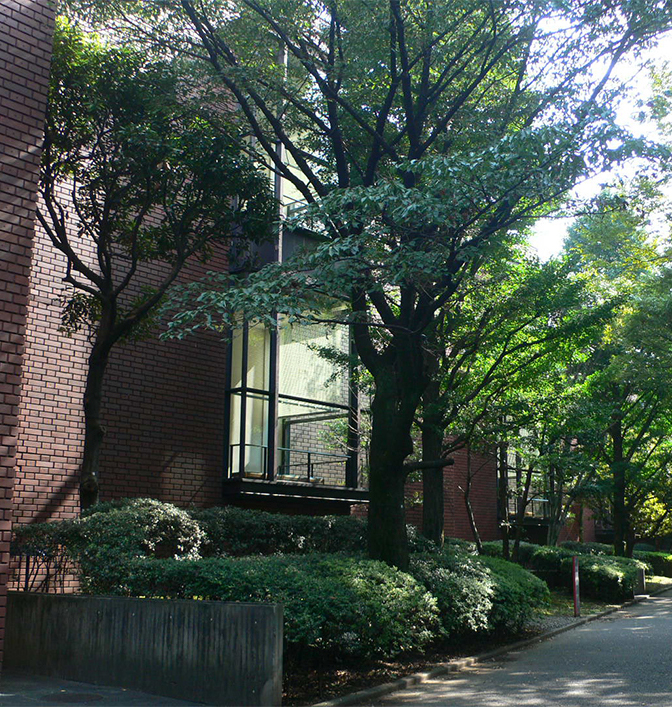
Topics
- 2021.06.07:
- Online Viewing Ticket is now available.
- 2021.04.15:
- Announcement of the virtual conference
- 2021.03.30:
- Announcement of the online conference
- 2021.02.01:
- Third round call for papers had been closed
- 2020.12.15:
- Third Round Call for Papers / New sessions
- 2020.11.15:
- Second round call for papers had been closed
- 2020.10.01:
- Second round call for papers
- 2020.06.30:
- DOCOMOMO 2020+1 Schedule UPDATE
- 2020.06.08:
- VIRTUAL TOUR WITH DR. NAHOO + MOMO
- 2020.05.14:
- Modernism is Frozen Discussion is Opened
- 2020.05.14:
- The Gallery of MOMO Origamic Architecture
- 2020.04.30:
- DOCOMOMO2020 Covid-19 Statement3
- 2020.04.18:
- DOCOMOMO2020 Covid-19 Statement2
- 2020.03.31:
- DOCOMOMO2020 Covid-19 Statement
Dates to Remember
| 31 January | Full paper submission deadline (1st version) Registration deadline for speakers and session chairs |
|---|---|
| 10 March | Deadline for session chairs to return papers with comments to the speakers |
| 15 June | Full paper submission deadline (final version) Full submission of the key lecture of the session |
| 1 October - 15 November |
Second round call for papers |
| 15 December - 31 January |
Third Round Call for Papers solicitation |
| 20 December | Second round Call for paper’s notification of acceptance |
| 31 March | Full paper submission deadline (1st version) |
|---|---|
| 30 April | Deadline for session chairs to return papers with comments to the speakers |
| 20 May | Full paper submission deadline (final version) |
| 29 August | 16th International Docomomo Conference Opening reception |
| 30 August - 1 September | 16th International Docomomo Conference2020+1 |
| 2 September | International symposium and closing ceremony |
Schedule
International Conference 2020+1
| 29th August | Opening / Key note speech |
|---|---|
| 30th August | Academic Presentation |
| 31st August | Academic Presentation |
| 1st September | Academic Presentation |
| 2nd September | Symposium / Closing |
Conference Organisation
Executive Committee
Ana Tostoes (Docomomo International)
Louise Noelle (ISCs Representative)
Yoshiyuki Yamana (Docomomo Japan)
Zara Ferreira (Former Secretary-General of Docomomo International)
Scientific Committee
- Ana Tostoes (Docomomo International)
- Changmo Ahn (South Korea)
- France Vanlaethen (Canada)
- Franz Graf (Switzerland)
- George Kunihiro (Japan)
- Johannes Widodo (Macau)
- Jose Manuel Pozo (Iberia)
- Kenji Watanabe (Japan)
- Ken Tadashi Oshima (US)
- Louise Noelle (Mexico)
- Miles Glendinning (Scotland)
- Ola Uduku (Ghana)
- Richard Klein (France)
- Ruth Verde Zein (Brazil)
- Sangeeta Bagga (India)
- Scott Robertson (Australia)
- Shin Muramatsu (Japan)
- Uta Pottgiesser (Germany)
- Wessel de Jonge (Netherlands)
- Yoshiyuki Yamana (Japan)
cTakeshi Kirihara


